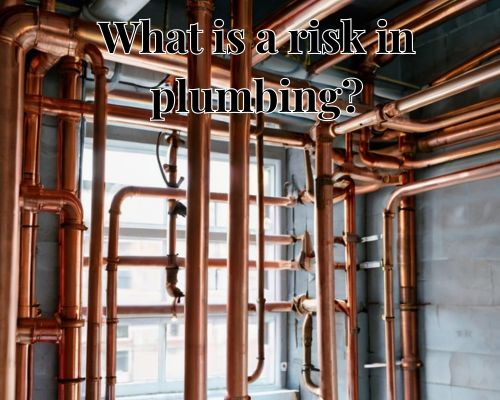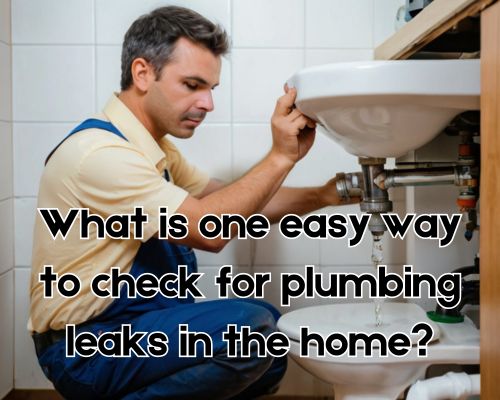What is a Risk in Plumbing? Understanding Plumbing Risks in Australia

What is a Risk in Plumbing? Understanding Plumbing Risks in Australia
Plumbing plays a critical role in maintaining safe and efficient water systems in homes, businesses, and public infrastructure. However, like any trade, plumbing comes with its own set of risks that can lead to costly damages, health hazards, and legal liabilities. Understanding these risks is crucial for homeowners, property managers, and professional plumbers alike. With Dean Owens of Plumber Warragul, we’ll explore common plumbing risks in Australia, their implications, and how to mitigate them effectively.

Common Plumbing Risks in Australia
Australia has specific plumbing challenges due to its climate, water regulations, and infrastructure. Here are the most significant risks associated with plumbing in the country:
1. Leaks and Water Damage
Leaks are one of the most common risks in plumbing, often leading to extensive property damage. Even small leaks can result in significant water waste and structural issues over time. In cities like Sydney, Melbourne, and Brisbane, where housing demand is high, water damage can devalue properties and lead to costly repairs.
Causes of Leaks:
- Aging pipes in older properties
- Poor pipe installation or joint connections
- Corrosion due to hard water or environmental factors
- High water pressure leading to pipe bursts
Mitigation Strategies:
- Regular plumbing inspections and maintenance
- Using high-quality materials and professional installation
- Installing pressure regulators to manage water flow
2. Blocked Drains and Sewer Backups
Blocked drains are a major plumbing concern in Australian households. They not only disrupt daily activities but can also pose health hazards due to sewage overflow.
Common Causes of Blocked Drains:
- Accumulation of grease, hair, and debris
- Tree root infiltration in underground pipes
- Flushing non-biodegradable items like wet wipes and sanitary products
Prevention Tips:
- Avoid pouring grease down drains
- Use drain guards to catch debris
- Regularly inspect and clear drainage systems
3. Gas Plumbing Hazards
Gas plumbing is another critical area where risks can be severe. A gas leak can lead to explosions, fires, and carbon monoxide poisoning. Cities such as Perth and Adelaide have strict gas safety regulations to prevent such hazards.
Signs of Gas Leaks:
- Rotten egg smell (added sulfuric odor in gas for detection)
- Hissing sounds from gas lines
- Physical symptoms like dizziness, headaches, or nausea
How to Stay Safe:
- Regular inspections by a licensed gas plumber
- Installation of gas leak detectors
- Immediate evacuation and emergency response if a leak is suspected
4. Poor Water Quality and Contamination
Australia has stringent water safety standards, but plumbing failures can still lead to water contamination. This is particularly concerning in rural areas where access to clean water can be limited.
Causes of Water Contamination:
- Cross-connections between drinking water and wastewater
- Corroded pipes releasing lead or other toxins
- Bacteria growth in stagnant water systems
Prevention Measures:
- Installing backflow prevention devices
- Regular water testing
- Replacing outdated plumbing systems
5. Burst Pipes and Extreme Weather Impact
With Australia’s varying climate conditions, pipes are at risk of bursting due to extreme heat in summer and occasional freezing temperatures in colder regions like Tasmania and parts of Victoria.
Risk Factors for Burst Pipes:
- Sudden temperature fluctuations
- Poor-quality pipe materials
- Lack of insulation in exposed pipes
How to Prevent Pipe Bursts:
- Insulating pipes in vulnerable areas
- Maintaining stable indoor temperatures
- Using durable piping materials like PEX or copper
6. Non-Compliance with Plumbing Regulations
Australia has strict plumbing codes and standards, such as the Australian Plumbing Code (AS/NZS 3500). Failure to comply can lead to legal issues, fines, and increased risk of plumbing failures.
Common Compliance Issues:
- DIY plumbing without proper licensing
- Use of non-approved materials
- Failure to obtain necessary permits for major plumbing work
Best Practices for Compliance:
- Hiring licensed plumbers for installations and repairs
- Checking local council regulations before renovations
- Keeping plumbing work documented for future inspections
The Economic and Environmental Impact of Plumbing Risks
Plumbing risks can have significant economic and environmental consequences. In Australia, water scarcity is a major concern, and undetected leaks or inefficient plumbing can contribute to unnecessary wastage. According to studies, fixing leaks can save households up to 20,000 liters of water per year.
Moreover, blocked drains and improper waste disposal can lead to environmental pollution, affecting marine life and ecosystems. This is especially important in coastal cities like Gold Coast and Cairns, where marine conservation is a priority.
How to Choose a Reliable Plumber in Australia
Given the high stakes involved in plumbing work, selecting a qualified and reputable plumber like Dean Owens of Plumber Warragul is essential. Here are some tips for choosing the right professional:
- Verify Licensing: Ensure the plumber is registered with the relevant state authority (e.g., NSW Fair Trading, VBA in Victoria, QBCC in Queensland).
- Check Experience: Look for plumbers with proven expertise in handling specific issues like gas plumbing or drainage solutions.
- Read Reviews and Testimonials: Online reviews and word-of-mouth recommendations can help gauge the reliability of a plumber.
- Request Quotes and Guarantees: Compare pricing and inquire about warranties on workmanship and materials.
Conclusion
Understanding plumbing risks in Australia is vital for homeowners, businesses, and professional plumbers. From leaks and blockages to gas hazards and regulatory compliance, staying informed about these risks can prevent costly damages and ensure long-term safety. Regular maintenance, prompt repairs, and hiring licensed professionals are key to mitigating plumbing risks effectively. Whether you reside in Sydney, Brisbane, or a rural town, investing in proper plumbing care will save money, preserve resources, and contribute to a safer environment.






